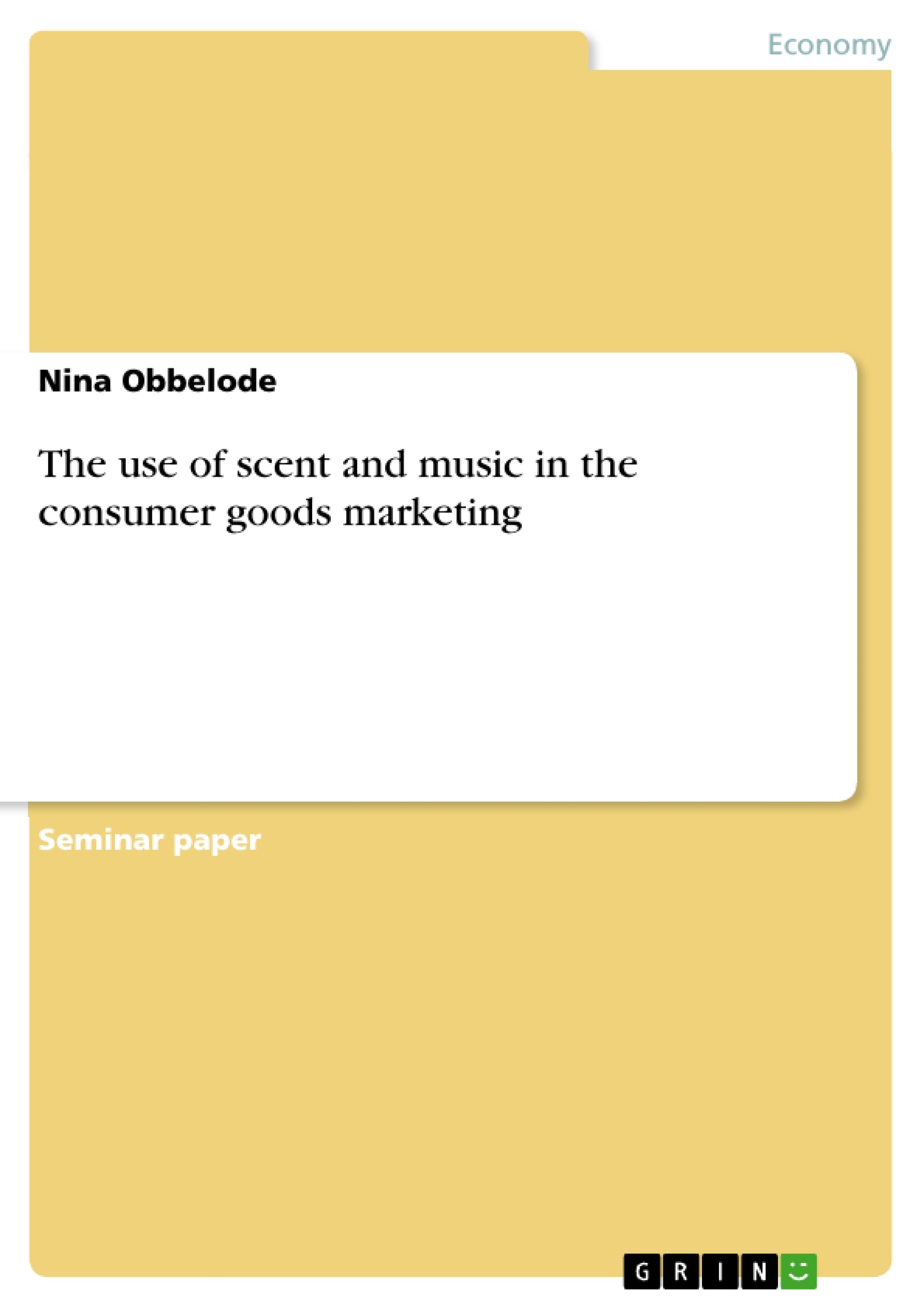Excerpt
Table of Contents
1 Introduction
2 The relation between the customer’s mood and his affection to buy
3 Examination of scent, music, and the two combined factors influencing the customer’s mood and his affection to buy
3.1 The effects of scent on the customer’s mood and on his affection to buy
3.2 The effects of music on the customer’s mood and on his affection to buy
3.3 The combined stimuli of scent and music
4 Summary and future perspectives
References
1 Introduction
“The mind is like an iceberg, it floats with one-seventh of its bulk above water” (Sigmund Freud, psychologist).
According to Freud’s quotation, the main part of the mind is beneath the water and is called the subconscious. That means people are sometimes in a certain mood, think and act automatically without knowing the reasons. Wants arise from the subconscious mind; and manipulating the customer’s wants is exactly what marketing experts in department stores would like to achieve. So the question is, if there are possibilities to influence the client’s shopping habits in order to maximise the profit.
For a long time, specialists in department stores have only concentrated on the aware visual, gustatory and haptical sense and have neglected the acoustical and especially the olfactory one. The customer could look at the products, could try foods in the supermarkets at cheese or sausage counters and were allowed to touch the goods. A specific smell or a sound used to be considered to be less important in the consumer goods marketing. It is true that 83% of sensations are received by the eyes. However, the more senses are addressed, the more information can be processed (cp. Fösken, 2006, p. 31).
Nowadays, the subliminal manipulation of the costumer gets more and more in the focus of the smart salesmen. Because of a strong competition on the saturated consumer good market, a holistic strategy is needed to distinguish the products from the competitors´. An experience-driven marketing strategy, which activates all five senses, becomes the new trend.
In this term paper, the focus is going to be on the use of scent and music in department stores and shops. I establish the hypothesis that the two stimuli have an unconscious, positive influence on the customer’s mood. Furthermore, a good customer’s mood will have positive influences on his expenditures.
To verify these assumptions, several researches are going to be analysed. Biological and chemical processes in the human body are neglected by reasons of shortage of space in this assignment. Also the technical implementation is not treated.
Part two of the term paper is going to be about the relation between the customer’s mood and his affection to buy products in department stores.
In the first two chapters of part three, scent and music are separately examined concerning their effects on the customer’s affection to buy.
The combination of scent and music is treated in the third chapter of part three.
Part four of this term paper summarises the most important gained information. Moreover, it gives pragmatic recommendations and future perspectives for the consumer goods marketing.
2 The relation between the customer’s mood and his affection to buy
Everybody knows this situation: You need one single shirt for the party next Friday. Full of pleasant anticipation of the celebration, you enter happily the clothes store. After one hour, you leave it- with three shirts, two trousers, a belt and a new pair of shoes.
According to Vanecek (1991, p.20.), the difference between the previous planned buying, in this case the one shirt, and the actual buying is called impulsive buying. Especially the positive mood plays a big role in this example. Looking forward to the party on Friday, you are willing to buy more clothes and more expensive ones, although you do not really need them. Silberer and Jaekel (1996, p. 16) define mood as the momentary, subjectively experienced mental state. As a conclusion, the better the momentary mental state, the higher the expenditures?
There are several researches about the customer’s mood and his behaviour while shopping. The written conclusion seems to be true: The researches all state that customers in a good mood have higher expenditures (eg. Bost, 1987, pp.157- 159; Sherman & Smith, 1987, pp. 253; Swinyard, 1993, pp. 275- 277, in Jaekel et al., 1996, pp. 246). Jaekel describes an experiment by Bost (1987 p. 157- 159, in Jaekel et al., 1996, pp. 246): A customer in a good mood spends more time in the stores, he spends more money, he is more open for testing new products, he ranks the product’s quality higher and he is more satisfied with the staff and the shop. The reason is that a customer in a good mood perceives only the positive factors of the store and neglect negative ones.
One can assume that a positive customer’s affection is not only important in the short run for a single buy, but also in the long run: A satisfied customer is going to return to the same shop and is going to buy there for a second time. In addition and almost more important, he is going to tell many other people about his good experiences, which is the best advertisement for a store.
[...]
- Quote paper
- Bachelor Nina Obbelode (Author), 2008, The use of scent and music in the consumer goods marketing, Munich, GRIN Verlag, https://www.grin.com/document/91196
Publish now - it's free






















Comments